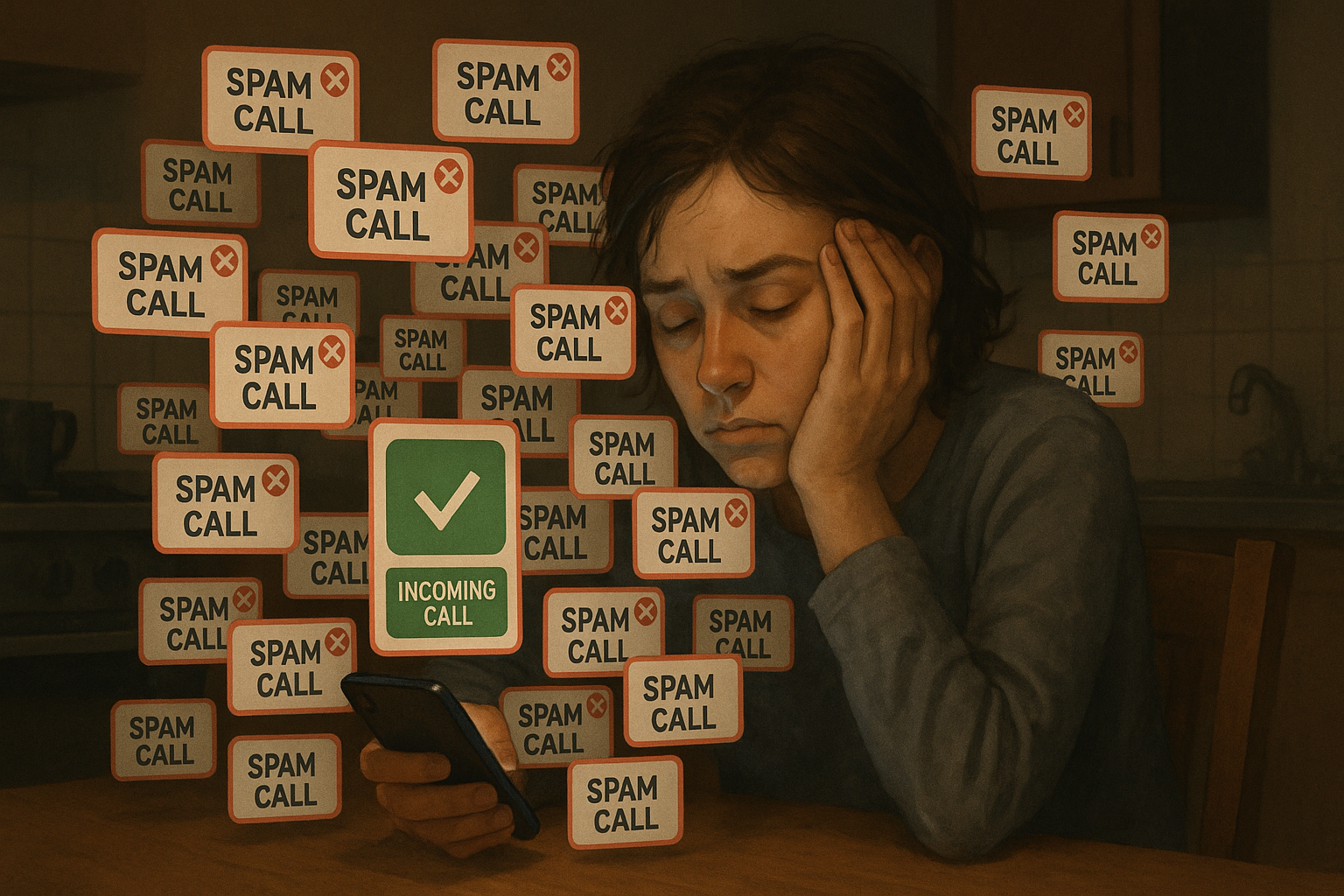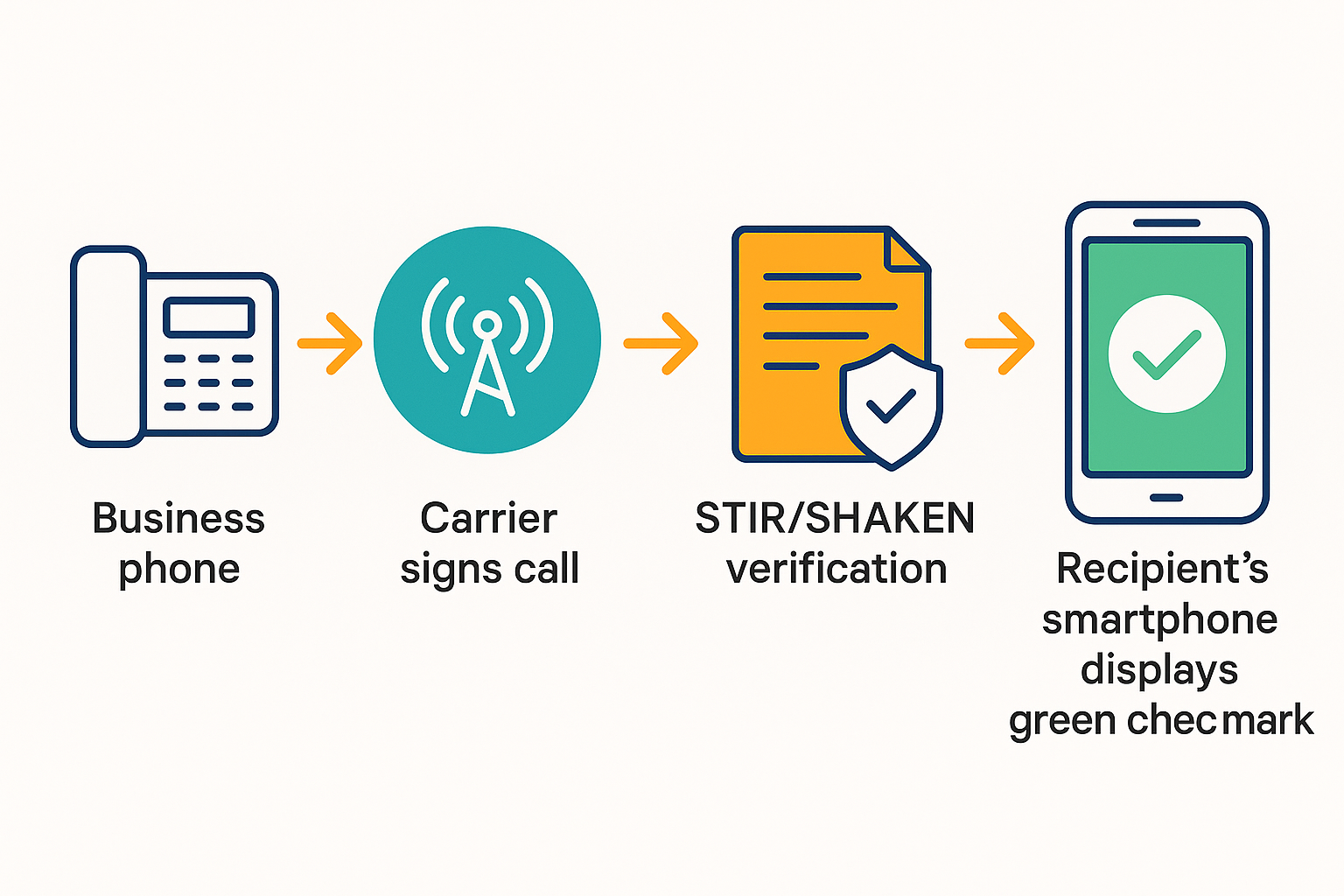Key Takeaways
- The check mark means the number is real. STIR/SHAKEN with A-level attestation proves the caller owns that ID, and Android or iOS can show “Verified.” Brands can add name, logo, and call reason with Google Verified Calls.
- It raises answer rates but isn’t a lie detector. Some routes drop the token, and analytics can still flag you as “Spam Likely.” Verified and spam labels can appear together.
- To earn it, use numbers you own, keep CNAM updated, pick a provider that signs at A-level, and enroll for branded display if your customers use Android. You’ll see the badge in days.
Picture this you’re staring at your ringing phone, thumb hovering over “Decline”
If it feels like spam calls are multiplying, you’re not imagining things. U.S. phones endured about 55 billion robocalls in 2023 alone.
Those relentless rings pushed carriers, regulators, and Google to roll out verified calls a tiny ✔︎ (sometimes a green shield or simple “V”) that tells you “the number you see is the number actually calling.” Today we’re pulling back the curtain on that badge: what it proves, how it’s earned, and why it still isn’t kryptonite against scammers.
How ‘verified’ shows up on phones (quick map)
• STIR/SHAKEN (US/Canada): Adds a green check / “Verified” flag only if your provider signs the call with Attestation A (you own the number).
• Branded Caller ID (analytics apps: Hiya / TNS / First Orion): Shows logo, name, reason(“Appointment reminder”) on supported Android devices. Requires brand vetting.
• Google Verified Calls (GVC): On Android with Google Phone app → name + logo + reason. Must register brand & send call intent via API.
• CNAM (name dips): Landlines & some mobiles show text name (no logo). Needs a registered business name.
• Spam/Scam labels: If carriers/analytics score you poorly, users may see “Spam Likely” or red warning.
Why the phone industry had to fix caller ID
Spoofing let fraudsters make your screen flash “IRS” or “Mom” with zero proof. The FCC finally stepped in, ordering every major U.S. voice provider to deploy STIR/SHAKEN caller-ID authentication by June 30, 2021.
Carriers now cryptographically sign each outbound call; recipient networks verify that signature. If everything checks out, your phone shows that reassuring badge. If not, you either see nothing special or a blunt “Caller ID not verified.”

What the checkmark really tells you
1. Number authenticity
The originating carrier used a digital certificate to sign the caller’s number, and the terminating carrier validated it. Think “HTTPS lock icon,” but for phone calls.
2 . Attestation strength
An A-level attestation means the provider both knows the customer and knows they own that caller-ID number; B means “we know the customer, not sure about the number,” while C is essentially an unverifiable gateway hop. Only A-level calls usually earn the visible badge.
3. A visual nudge
Android phones show a green shield or the word Verified; many iPhones place a subtle check-mark beside the number or in call history.
How STIR/SHAKEN works (without drowning you in acronyms)
Let’s trade telecom jargon for envelopes and wax seals:
1. STIR creates a tamper-proof “letter” containing the caller’s number plus that A/B/C attestation.
2. The originating carrier stamps the letter with its private cryptographic seal.
3. SHAKEN is the protocol every downstream carrier follows to verify the seal.
4. If the seal is valid, your phone shows the badge; if not, no badge (or a warning) appears.
That’s it no personal data is shared, and the whole handshake disappears the instant the call ends.
Google’s extra layer: Verified Calls with branding
On newer Android devices, businesses can go beyond the ✔︎: name, logo, and even “reason for call” slide into your caller-ID card. Google’s secure handshake confirms the business identity, then instantly discards the data. Handy when your pharmacy calls and the screen literally says “Prescription ready for pickup.”
Where you’ll see the badge
| Device or network | What you’ll notice | Helpful tip |
|---|---|---|
| Samsung & Pixel phones | Green shield + “Verified” text | Requires Phone app spam protection toggled on |
| iPhone (iOS 17) | Check-mark after the number in Recents | Badge appears only if carrier sent A-level attestation |
| Comcast/Xfinity landline handsets | A preceding “V” before the number | Shows on both wired and cordless sets |
Does verification really make a difference?
Business case studies suggest answer-rate lifts anywhere from 18 % to 76 % once the unknown number gets a branded, verified display. For consumers, fewer missed calls from the bank or the doctor means fewer “Sorry, thought you were spam” callbacks and that’s priceless.
What the badge can’t promise
- It’s not a lie detector. A con artist can still own a real number and use it for shady sales pitches.
- Not universal yet. Some international and legacy VoIP routes strip away the STIR/SHAKEN token en route, so the check-mark never appears.
- Analytics still matter. Carriers rely on separate spam-scoring engines; a call can be “Verified” and flagged “Spam Likely” at the same time.
For business owners: your three-step path to the badge
(Don’t worry, this isn’t a hard sell just the DIY checklist.)
1. Use numbers you truly own and keep them registered in your carrier’s CNAM or “caller-name” database.
2. Ask your VoIP or PBX provider about STIR/SHAKEN A-level attestation. If they shrug, consider a provider that does sign at A-level.
3. Enroll in Google Verified Calls (or a partner like First Orion) if most of your customers use Android.
Done right, your outbound calls will start showing that trust-building badge within days.

Conclusion
No technology makes phone calls 100 % safe, yet the verified-call badge slices the biggest problem, number spoofing off the table. For everyday folks it means one less guess when the phone rings; for businesses, it means dramatically better answer rates and happier customers. In a world where 4.4 billion robocalls can hit in a single month, that’s progress worth answering for.
FAQs
1. Is a verified call the same as “Spam Likely”?
No. “Verified” says the number isn’t spoofed; “Spam Likely” predicts call intent. They can appear together.
2. Do I pay extra to receive verified calls?
No FCC rules made implementation costs the carriers’ problem.
3. Can scammers fake the badge?
Only by stealing a carrier’s private key, which is hugely unlikely. More common: using a legitimate number to pitch shady deals.
4. Why did my badge disappear after porting my number?
Porting resets attestation; your new carrier must re-sign the line at A-level.
5. Will verification ever cover text messages?
The FCC is studying SMS authentication, but standards aren’t finalized.
verified number is 20% but customer satisfaction is 80%


